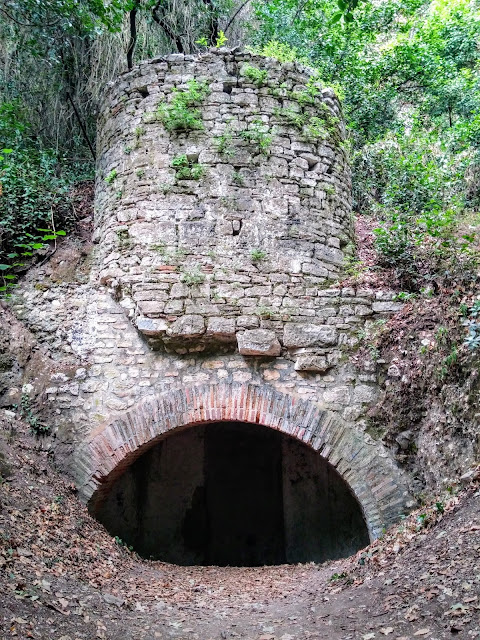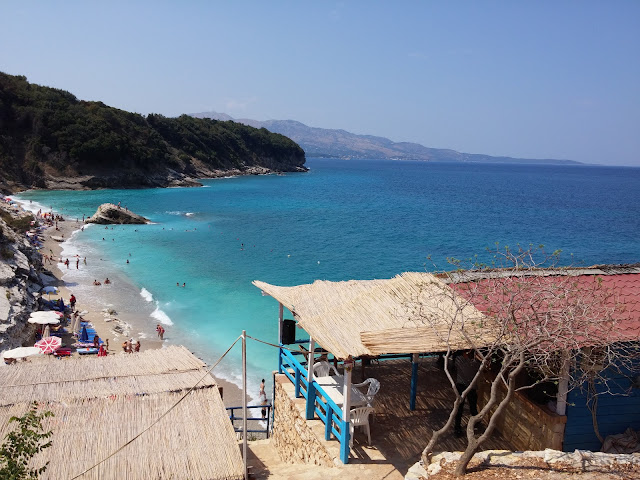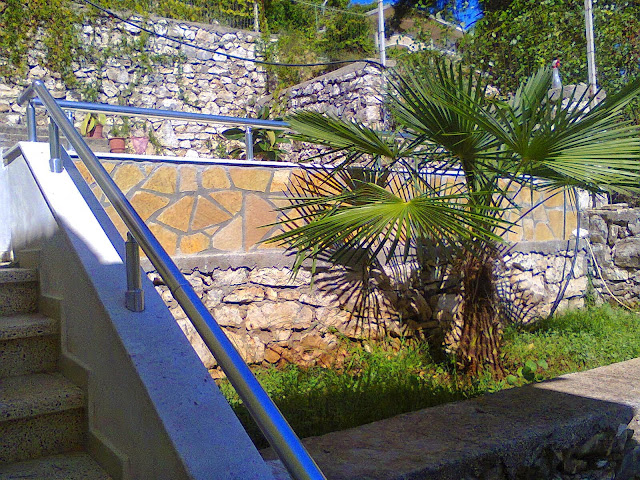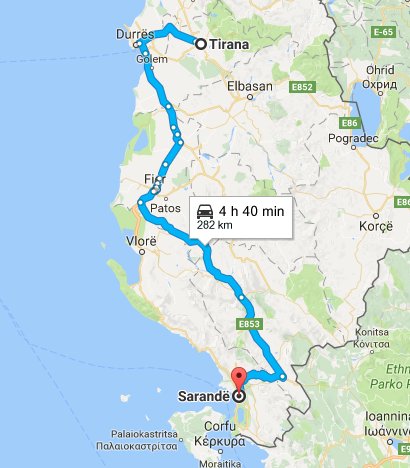BUTRINT (BUTHROTUM) - SARANDA ( ROMANS CITY RESTS )
Buthrotum (Albanian: Butrint; Latin: Buthrōtum; from Ancient Greek: Βουθρωτόν, Bouthrōtón) was an ancient Greek and later Roman city and bishopric in Epirus.
Inhabited since prehistoric times, Buthrotum was a city of the Greek tribe of the Chaonians, later a Roman colony and a bishopric. It entered into decline in Late Antiquity, before being abandoned during the Middle Ages after a major earthquake flooded most of the city. In modern times it is an archeological site in Vlorë County, Albania, some 14 kilometres south of Sarandë and close to the Greek border. It is located on a hill overlooking the Vivari Channeland is part of the Butrint National Park.
Bouthroton was originally a town within the Adriatic Balkan region of Epirus. It was one of the major centres of the Greek tribe of the Chaonians, with close contacts to the Corinthiancolony of Corcyra (modern Corfu). According to the Roman writer Virgil, its legendary founder was the seer Helenus, a son of king Priam of Troy, who had moved West after the fall of Troy with Neoptolemus and his concubine Andromache. Both Virgil and the Greek historian Dionysius of Halicarnassus recorded that Aeneas visited Bouthroton after his own escape from the destruction of Troy.
The earliest archaeological evidence of settled occupation dates to between 10th and 8th centuries BC, although some claim that there is earlier evidence of habitation in the 12th century BC.Excavation at Bouthroton has yielded Proto-Corinthian pottery of the 7th century and then Corinthian and Attic pottery of the 6th century, however there are no indications of a prehistoric settlement. Bouthroton was in a strategically important position due its access to the Straits of Corfu. By the 4th century BC it had grown in importance and included a theatre, a sanctuary dedicated to Asclepius and an agora. Around 380 BC, the settlement was fortified with a new 870m-long wall, with five gates, enclosing an area of 4ha. The Greek calendar of Bouthroton appears in the oldest known computer, the so-called Antikythera Mechanism (c. 150 to 100 BCE).
In 228 BC Buthrotum became a Roman protectorate alongside Corfu. In the next century, it became a part of a province of Macedonia. In 44 BC, Caesar designated Buthrotum as a colony to reward soldiers whom had fought for him against Pompey. Local landholder Titus Pomponius Atticus objected to his correspondent Cicero who lobbied against the plan in the Senate. As a result, Buthrotum only small numbers of colonists were settled.
In 31 BC, Roman Emperor Augustus fresh from his victory over Mark Antony and Cleopatra at the battle of Actium renewed the plan to make Buthrotum a veterans' colony. New residents expanded the city and the construction included an aqueduct, a Roman bath, houses, a forum complex and a nymphaeum. During that era the size of the town was doubled.
In the 3rd century AD, an earthquake destroyed a large part of the town, levelling buildings in the suburbs on the Vrina Plain and in the forum of the city centre. Excavations have revealed that city had already been in decline. However, the settlement survived into the late antique era, becoming a major port in the province of Old Epirus. The town of late antiquity included the grand Triconch Palace, the house of a major local notable that was built around 425.
The walls of the city were extensively rebuilt, most probably at the end of the 5th century, perhaps by Byzantine Emperor Anastasius. The Ostrogoths under Indulf raided the Ionian coast in 550 and may have attacked Buthrotum. Evidence from the excavations shows that importation of commodities, wine and oil from the Eastern Mediterranean continued into the early years of the 7th century when the early Byzantine Empire lost these provinces. In this, it follows the historical pattern seen in other Balkanic cities, with the 6th to 7th century being a watershed for the transformation of the Roman world into the Early Middle Ages.
By the 7th century, following the model of classical cities throughout the Mediterranean, Buthrotum had shrunk to a much smaller fortified post and with the collapse of Roman power was briefly controlled by First Bulgarian Empire before being regained by the Byzantine Empire in the 9th century.
Medieval and Venetian Period
It remained an outpost of the Byzantine empire fending off assaults from the Normans until 1204 when following the Fourth Crusade, the Byzantine Empire fragmented, Butrint falling to the breakaway Despotate of Epirus. In the following centuries, the area was a site of conflict between the Byzantines, the Angevins of southern Italy, and the Venetians, and the city changed hands many times. In 1267, Charles of Anjou took control of both Buthrotum and Corfu, leading to further restorations of the walls and the Great Basilica.
The dogal Republic of Venice purchased the area including Corfu from the Angevins in 1386; however, the Venetian merchants were principally interested in Corfu and Buthrotum once again declined.
By 1572 the wars between Venice and the Ottoman Empire had left Buthrotum ruinous and at the order of Domenico Foscarini, the Venetian commander of Corfu, the administration of Buthrotum and its environs was shifted to a small triangular fortress associated with the extensive fish weirs. The area was lightly settled afterwards, occasionally being seized by the Ottoman Turks, in 1655 and 1718, before being recaptured by the Venetians. Its fisheries were a vital contributor to the supply of Corfu, and olive growing together with cattle and timber were the principal economic activities.
The Treaty of Campo Formio of 1797 split between France and Austria the territory of the Republic of Venice, which France had just occupied and abolished, and under article 5 of the treaty, Butrint and the other former Venetian enclaves in Albania came under French sovereignty.
However, in 1799, the local Ottoman governor Ali Pasha Tepelena conquered it, and it became a part of the Ottoman Empire until Albania gained its independence in 1912. By that time, the site of the original city had been unoccupied for centuries and was surrounded by malarial marshes.
Sources taken from :












Comments
Post a Comment